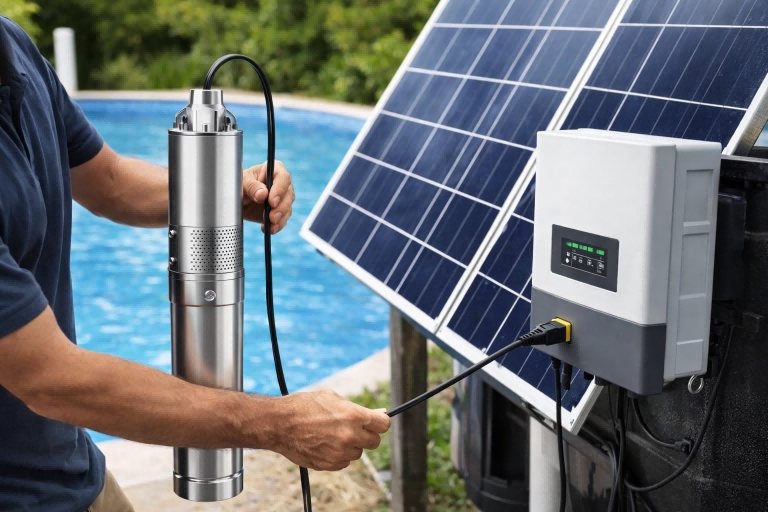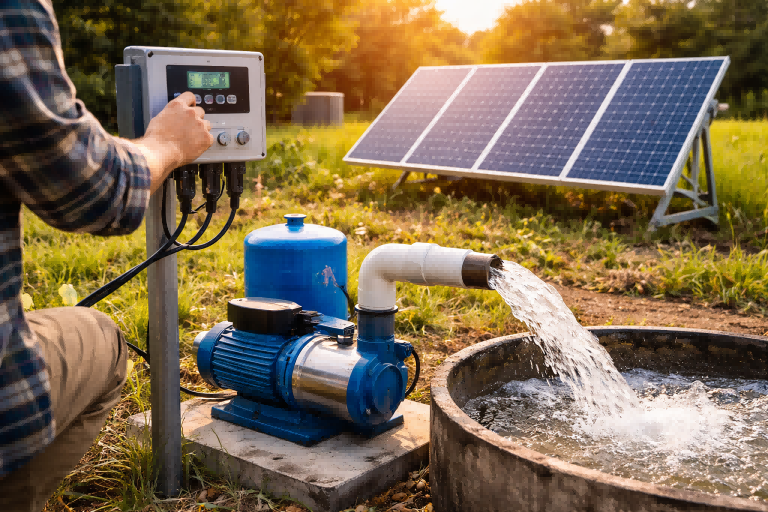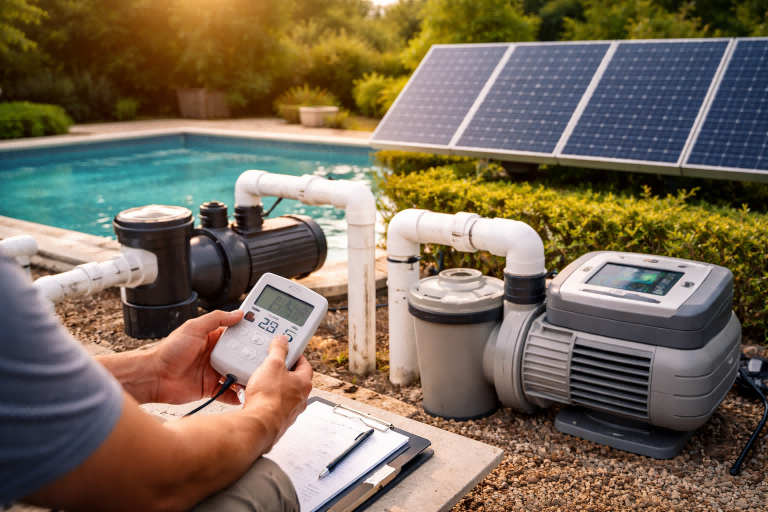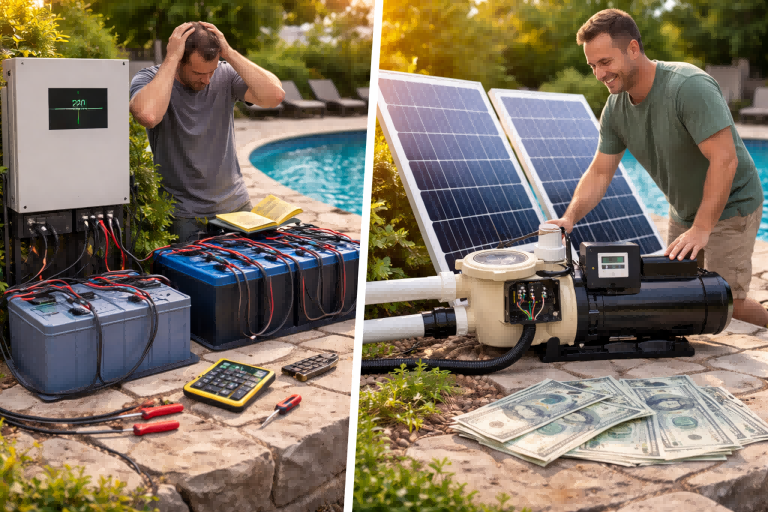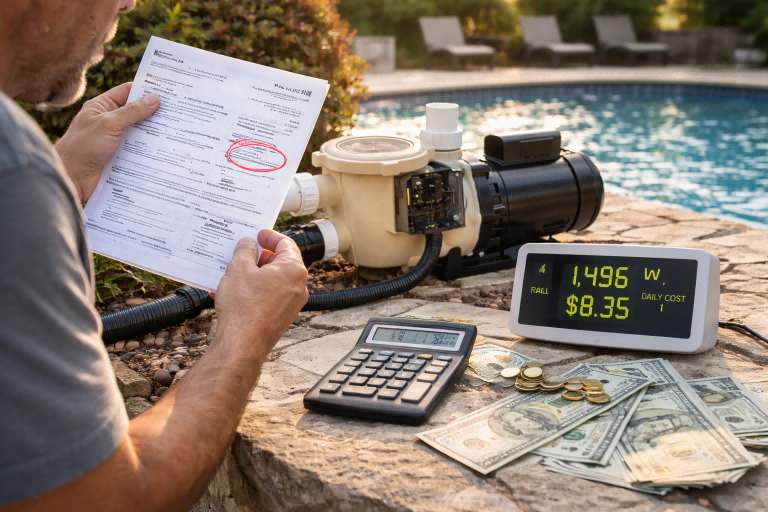Struggling with inefficient irrigation and high costs?
Your pump choice impacts crop health and your budget.
Making the right decision ensures optimal water flow and saves significant energy.
The best pump for irrigation depends on your water source, field size, and pressure needs.
Centrifugal pumps are the most popular for surface water sources.
Submersible pumps are ideal for deep wells.
For ultimate efficiency and control, VSD (Variable Speed Drive) booster pumps are the top choice for modern systems.
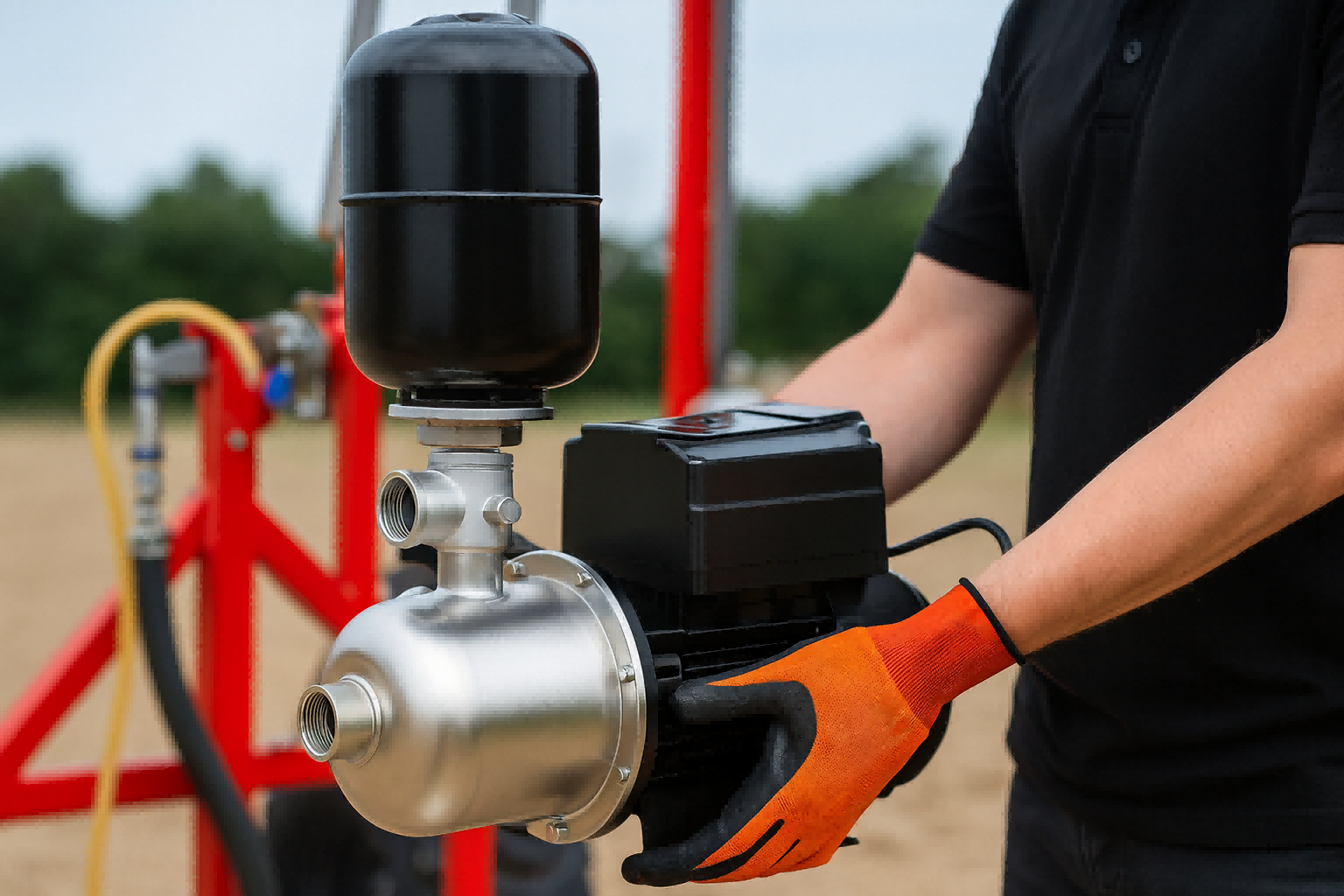
Choosing an irrigation pump can feel overwhelming.
With so many types, how do you know which is right for your customers?
The wrong choice can lead to wasted water, damaged crops, and unhappy clients.
Understanding the core pump types and their applications is the first step toward becoming a trusted supplier.
This guide will break down everything a distributor needs to know, from basic principles to advanced technology.
Let's ensure you can confidently advise your clients on the perfect pump for any irrigation scenario.
Understanding Your Irrigation Needs First
Are you guessing which pump your irrigation system needs?
This guesswork leads to poor performance and wasted energy.
You must assess your specific requirements to select an efficient and effective pump.
Before choosing a pump, you must calculate your Total Dynamic Head (TDH) and required flow rate (GPM).
These two factors are the foundation for selecting a correctly sized and efficient pump, preventing underperformance and energy waste.
To select the right irrigation pump, you must first become an expert in system requirements.
You cannot recommend a product without understanding the problem it needs to solve.
The two most critical factors are the flow rate and the Total Dynamic Head (TDH).
Flow Rate (Gallons Per Minute - GPM)
Flow rate is the volume of water needed to irrigate a specific area effectively.
Think of it as the speed of water delivery.
It is determined by the size of the area and the type of irrigation system used.
For example, drip irrigation requires a much lower flow rate than large sprinkler systems.
You must determine the total GPM required by all the sprinkler heads or drip emitters operating at one time.
This calculation is fundamental.
A pump with too low a GPM will result in dry spots and unhealthy crops.
A pump with an excessively high GPM wastes energy and can damage system components.
Total Dynamic Head (TDH)
TDH is the total equivalent pressure the pump must overcome to move water from the source to the destination.
It is a more complex calculation than flow rate.
It includes three main components.
- Static Head: This is the vertical distance you are lifting the water. It includes the static lift (from the water source up to the pump) and the elevation difference (from the pump up to the highest point of delivery).
- Friction Loss: As water moves through pipes, fittings, and valves, it encounters friction. This friction reduces pressure. You must calculate the friction loss for the entire length and diameter of your pipe system. Longer pipes and more bends increase friction loss.
- Operating Pressure: This is the pressure required at the sprinkler heads or emitters to function correctly. The manufacturer of the irrigation equipment specifies this value.
The formula looks like this:
TDH = Static Head + Friction Loss + Operating Pressure
Accurately calculating both GPM and TDH is not just a suggestion.
It is a requirement for professional irrigation design.
As a distributor, understanding how to guide your clients through this process positions you as a valuable partner, not just a seller.
| Factor | Description | Why It Matters |
|---|---|---|
| Flow Rate (GPM) | The volume of water moved per minute. | Ensures all areas receive adequate water without wasting energy. |
| Static Head | The vertical elevation change from the water source to the highest outlet. | Determines the raw lifting power the pump needs. |
| Friction Loss | Pressure lost due to friction in pipes and fittings. | Affects the final pressure; must be overcome by the pump. |
| Operating Pressure | The pressure needed at the sprinklers or emitters to work correctly. | The final pressure requirement for the system to be effective. |
Common Types of Irrigation Pumps Explained
Confused by the different names for irrigation pumps?
This confusion can lead to purchasing a pump that is completely wrong for the job.
Understanding the main categories is key to making a smart choice.
The most common irrigation pumps are centrifugal, submersible, and turbine pumps.
Centrifugal pumps are for surface water, submersibles for deep wells, and turbine pumps for high-volume applications.
Each is designed for specific water sources and pressure demands.
After you calculate your flow rate and TDH, the next step is to match those needs with a specific pump type.
Pumps are not one-size-fits-all.
They are specialized tools designed for different situations.
The primary difference often comes down to the location of your water source: is it on the surface or deep underground?
Let's explore the main categories your clients will be choosing from.
Centrifugal Pumps
These are the most common type of pump used for irrigation.
They are typically installed on the ground and pull water from a surface source.
Think of sources like a pond, a lake, a river, or a shallow well.
The pump uses an impeller to spin the water and create centrifugal force, which pushes it out into the irrigation system.
They are versatile and available in many sizes.
However, they have limitations.
Centrifugal pumps are excellent at pushing water but not as good at pulling it from a distance.
They must be "primed," meaning the pump casing and suction line need to be filled with water before the first use.
Submersible Pumps
As the name suggests, submersible pumps are placed directly into the water.
They are long, cylindrical pumps designed to be lowered deep into a well casing.
Unlike a centrifugal pump that pulls water, a submersible pump pushes water up from the bottom of the well to the surface.
This makes them incredibly efficient for deep water sources.
Because the pump is submerged, it is self-priming and operates very quietly.
The motor is hermetically sealed and designed for underwater operation.
These are the go-to solution when your water source is a deep well.
Turbine Pumps
Turbine pumps are another type used for wells.
They can be thought of as a hybrid.
The motor sits on the surface, making it easy to access for maintenance.
A long shaft extends down into the well to a series of submerged bowls or impellers.
These are called vertical turbine pumps.
They can produce very high flow rates and pressures, making them suitable for large-scale agricultural or industrial applications.
They are more complex and expensive than submersible pumps but are a powerful solution for high-demand wells.
Choosing the right category is the first major decision.
It narrows down your options significantly and ensures you are looking at the right tools for the job.
Centrifugal Pumps: The Versatile Workhorse
Need a reliable pump for a surface water source?
Picking the wrong model can lead to priming issues and low pressure.
A centrifugal pump is often the best choice for ponds, lakes, and shallow wells.
Centrifugal pumps are the most widely used for irrigation, offering a great balance of cost, performance, and reliability for surface water.
They excel at pushing water and come in various configurations to meet different pressure and flow requirements.
Centrifugal pumps are the backbone of many irrigation systems around the world.
Their popularity comes from their simple design, cost-effectiveness, and versatility.
If your water source is easily accessible on the surface, a centrifugal pump is likely on your list.
However, not all centrifugal pumps are the same.
Understanding their variations is key to selecting the right one.
How They Work
A centrifugal pump is a simple machine.
Water enters the pump through the suction inlet, right into the center of a spinning impeller.
The impeller has curved vanes that sling the water outward at high speed.
This high-speed water then enters the pump casing, called a volute.
The volute is a specially shaped chamber that slows the water down.
As the water slows, its kinetic energy is converted into pressure.
This pressurized water then exits through the discharge outlet and into your irrigation pipes.
The key limitation is suction lift.
Most centrifugal pumps can only lift water from about 25 feet (7.6 meters) below the pump, and in practice, it's often less.
Priming is a Must
A critical aspect of standard centrifugal pumps is priming.
The pump cannot move air.
It needs to be filled with water to create the suction required to draw from the source.
This is why "self-priming" centrifugal pumps are a popular sub-category.
These pumps have an extra chamber that retains enough water to prime itself automatically after the initial fill.
This is a huge convenience feature for many users.
It eliminates the need to manually fill the pump before each use.
Types of Centrifugal Pumps
There are several variations to consider, each suited for different needs.
- Standard (End-Suction): The most common type, with the suction on one end and discharge on top. Great for general-purpose use.
- Self-Priming: As mentioned, these have a built-in reservoir to stay primed. Ideal for situations where the pump might run dry or has a suction lift.
- Multistage: These pumps have multiple impellers in a series. Each stage adds more pressure. They are used for high-head, low-flow applications, like pushing water up a tall hill or over a long distance.
| Pump Type | Best For | Key Feature | Consideration |
|---|---|---|---|
| Standard Centrifugal | General boosting from ponds, tanks. | Cost-effective and simple. | Requires manual priming; limited suction lift. |
| Self-Priming | Suction lift applications (shallow wells). | Automatically re-primes itself. | Slightly more expensive than standard models. |
| Multistage Centrifugal | High-pressure, long-distance needs. | Generates very high pressure (head). | Lower flow rates compared to single-stage pumps. |
Choosing the right centrifugal pump means matching the model's capabilities with your calculated TDH and GPM.
For distributors, offering a range of these types allows you to serve a wide array of customer needs effectively.
Submersible Pumps: Going Deep for Water
Is your water source a deep well?
A surface pump cannot lift water from great depths.
You will have no water flow and a pump that does not work.
For deep wells, a submersible pump is the only effective solution.
It sits inside the well, pushing water to the surface efficiently.
This design overcomes the suction lift limitations of all surface-mounted pumps, delivering reliable water from hundreds of feet deep.
When the water you need is far below the ground, centrifugal pumps are no longer an option.
Their physical limitations on suction lift mean you need a different strategy.
This is where submersible pumps shine.
They don't pull water; they push it.
This fundamental difference makes them the superior choice for deep well applications.
Design and Operation
A submersible pump is a tightly integrated unit.
It consists of a sealed pump motor at the bottom and a series of stacked impellers on top.
This entire assembly is lowered into the well, completely submerged in the water.
When it turns on, water is drawn into the bottom of the pump section.
It then travels upward through a series of stages.
Each stage is essentially a small centrifugal impeller and diffuser.
Each one adds a bit more pressure to the water.
By the time the water leaves the top of the pump, it has enough pressure to travel all the way to the surface and pressurize the irrigation system.
Because the motor is also underwater, it is cooled by the surrounding water, allowing for efficient operation.
Advantages of Submersible Pumps
The benefits of this design are significant for deep well irrigation.
- No Priming Required: Since the pump is always submerged in water, it is always primed and ready to go.
- High Efficiency: Pushing water is much more energy-efficient than pulling it over a long vertical distance. Submersible pumps are unmatched in deep lift applications.
- Quiet Operation: With the pump and motor operating far underground, there is virtually no noise at the surface.
- No Suction Lift Limits: The depth is only limited by the power of the pump. They can be designed to push water from depths of over 1,000 feet (300 meters).
Selecting the Right Submersible Pump
Choosing a submersible pump requires careful matching with the well's characteristics.
Well Diameter
The pump must physically fit inside the well casing. Common sizes are 4-inch and 6-inch diameter pumps.
Pumping Depth
You need to know the static water level (the level of water when the pump is off) and the expected drawdown (how much the water level drops when the pump is running). The pump must be set below the drawdown level.
Required Flow and Pressure
Just like with any other pump, you must select a model that meets your GPM and TDH requirements. For submersibles, the TDH calculation must include the entire vertical lift from the pump's submerged position to the highest point of the irrigation system.
For a distributor, stocking submersible pumps opens up a critical market segment.
Clients with well-based irrigation depend on these reliable and powerful pumps.
Guiding them to the correct size and stage configuration based on their well report is a high-value service.
VSD Booster Pumps: The Smart, Efficient Choice
Tired of fluctuating water pressure and high electricity bills?
Traditional fixed-speed pumps waste energy by always running at full power.
This leads to unnecessary costs and mechanical wear.
Variable Speed Drive (VSD) booster pumps provide constant pressure while cutting energy use by up to 50%.
They automatically adjust their speed to match water demand, making them the most intelligent and efficient choice for modern irrigation.
While traditional pumps get the job done, they operate in a very basic way.
They are either on (at 100% speed) or off.
This is like driving your car with only two options: flooring the gas pedal or slamming on the brakes.
It's inefficient and puts a lot of stress on the system.
Modern irrigation demands a smarter approach.
Variable Speed Drive (VSD) technology, often paired with high-efficiency permanent magnet motors, revolutionizes pump performance.
How VSD Technology Works
A VSD, also known as a Variable Frequency Drive (VFD), is an intelligent controller for the pump's electric motor.
Instead of running at a fixed speed, the VSD can adjust the motor's speed in real-time.
It does this by changing the frequency of the electrical power supplied to the motor.
A pressure sensor is installed in the water pipe.
You set a desired constant pressure, for example, 50 PSI.
The VSD constantly monitors the pressure.
If you open one sprinkler and the pressure starts to drop, the VSD slightly speeds up the pump to maintain exactly 50 PSI.
If you open ten more sprinklers, the VSD speeds the pump up more.
If you turn everything off, the pump slows down to a stop.
This means the pump only uses the exact amount of energy needed at any given moment.
The Major Benefits of VSD Pumps
This intelligent control leads to transformative advantages.
Unmatched Energy Efficiency
The energy savings are the biggest selling point.
Pump power laws state that a small reduction in speed leads to a large reduction in power consumption.
Reducing pump speed by just 20% can reduce energy use by nearly 50%.
For irrigation systems that run for hours, this translates to massive savings on electricity bills.
Constant Water Pressure
Forget pressure fluctuations.
VSD pumps deliver a perfectly stable water pressure, regardless of how many zones are running.
This leads to more uniform water application, healthier plants, and optimal sprinkler performance.
Reduced Mechanical Stress
The "soft start" and "soft stop" nature of VSDs eliminates the sudden jolt and water hammer associated with fixed-speed pumps.
This reduces wear and tear on the pump, motor, pipes, and valves, significantly extending the lifespan of the entire system.
Quiet Operation
VSD pumps often run at lower average speeds, which makes them much quieter than their fixed-speed counterparts.
This is a major benefit for residential or noise-sensitive commercial applications.
| Feature | Fixed-Speed Pump | VSD Pump |
|---|---|---|
| Speed | 100% On or Off | 0% to 100% Variable |
| Energy Use | Always Maximum | Matches Demand; Highly Efficient |
| Pressure | Fluctuates with demand | Perfectly Constant |
| Lifespan | Shorter due to mechanical stress | Longer due to soft starts |
| Cost | Lower Initial Cost | Higher Initial Cost, Lower TCO |
For distributors targeting clients like Andrew in Australia, who value quality, efficiency, and long-term value, VSD pumps are a premium product.
They represent a higher initial investment but offer a rapid return through energy savings and improved system performance, making them an easy sell for savvy customers.
Key Factors to Consider When Choosing a Pump
Ready to choose a pump but worried you'll miss a detail?
Overlooking one key factor can result in a failed system.
A systematic approach ensures you select the perfect pump every time.
Beyond pump type, you must evaluate motor efficiency, materials of construction, and brand reputation.
These factors directly impact the pump's lifespan, reliability, and total cost of ownership, making them just as important as initial performance specifications.
You've calculated your GPM and TDH.
You've matched your water source to a pump category.
Now it's time to compare specific models.
This is where the details matter.
As a distributor, guiding your clients through these final selection criteria builds trust and ensures they purchase a product that lasts.
Look beyond the basic performance curve.
Motor Type and Efficiency
The motor is the heart of the pump.
Its efficiency directly impacts the long-term running cost.
Standard Induction Motors
These are the traditional workhorses. They are reliable but less efficient than modern alternatives.
Permanent Magnet Motors
These are the new generation of high-efficiency motors, often paired with VSDs.
They use powerful magnets instead of wire windings in the rotor, which eliminates electrical losses.
This results in higher efficiency, a smaller physical size, and cooler operation.
A pump with a permanent magnet motor will consume less electricity to do the same amount of work, adding to the savings provided by a VSD.
Materials of Construction
The materials used to build the pump determine its durability and resistance to wear and corrosion.
- Cast Iron: Strong, durable, and cost-effective. The standard for many pump casings. Good for clean water applications.
- Stainless Steel: Offers superior corrosion resistance. Essential for pump components like the impeller and shaft. In more aggressive water conditions, an all-stainless-steel pump is a wise investment for longevity.
- Bronze/Brass: Often used for impellers. They are corrosion-resistant and durable.
- Engineered Plastics: Used in some smaller or specialized pumps. They offer excellent corrosion resistance but may not have the strength or temperature resistance of metal.
Consider the water quality.
If the water is sandy, abrasive, or has a high mineral content, investing in more robust materials like stainless steel will prevent premature failure.
Net Positive Suction Head (NPSH)
This is a more technical but crucial factor for centrifugal pumps.
NPSH Available (NPSHa) is a characteristic of your system.
NPSH Required (NPSHr) is a characteristic of the pump.
You must ensure that NPSHa is greater than NPSHr.
If not, cavitation can occur.
Cavitation is the formation and collapse of vapor bubbles inside the pump, which is extremely destructive.
It sounds like pumping gravel and can destroy an impeller in a short time.
Always check the pump's NPSHr curve, especially in high-temperature or high-altitude applications.
Brand Reputation and Support
Finally, consider the manufacturer.
A reputable brand signifies quality control, reliable performance data, and readily available support.
As a B2B buyer, your reputation is tied to the products you sell.
Partnering with a manufacturer that has a track record of technical innovation, robust testing (like salt spray and UV resistance tests), and international certifications (like CE, IEC, RoHS) is a smart business decision.
It ensures you are providing your customers with a product you can stand behind.
Conclusion
Choosing the best irrigation pump means matching your specific needs—flow, pressure, and water source—with the right technology, from versatile centrifugals to intelligent, energy-saving VSD pumps.
FAQs
How do I choose a pump for my irrigation system?
First, calculate your required flow rate (GPM) and Total Dynamic Head (TDH).
Then, select a pump type—centrifugal for surface water or submersible for deep wells—that meets these specifications.
What size pump do I need for irrigation?
The "size" refers to the pump's ability to provide the necessary flow and pressure for your system.
There is no one-size-fits-all; it must be calculated based on your specific irrigation design.
How much pressure do I need for an irrigation pump?
This depends on your system.
Add the pressure required by your sprinklers, the pressure lost to friction in pipes, and the pressure needed to lift the water vertically (head).
Can I use a well pump for irrigation?
Yes, a properly sized submersible or jet pump designed for a well is often used for irrigation.
Ensure it can provide the sustained flow and pressure your irrigation system demands.
Is a centrifugal or submersible pump better for irrigation?
A centrifugal pump is better for surface water sources like ponds and shallow wells.
A submersible pump is superior and necessary for deep wells as it pushes water efficiently from below.
What is the most energy-efficient irrigation pump?
A pump equipped with a Variable Speed Drive (VSD) and a permanent magnet motor is the most energy-efficient.
It adjusts speed to demand, saving up to 50% or more on electricity.
How long can an irrigation pump run continuously?
A properly sized and installed commercial-grade pump is designed to run for many hours continuously.
Ensuring the pump is not running dry and has adequate cooling is key to its longevity.


